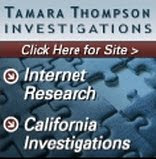The type and extent of disciplinary information varies from state to state.
Forty-four boards provide the date that the disciplinary action was taken. Thirty-nine boards provide at least 10 years of disciplinary information.
All 51 state medical boards now have Web sites and 49 of them provide some doctor-specific disciplinary information on the Internet. However, 45 state medical boards continue to provide disciplinary information whose content or user-friendliness is inadequate compared to the six states that received an "A" in both categories. In two cases, such information was entirely absent.
The six states that received an "A" for content and usability: Arizona, Maryland, North Carolina, New York, Ohio and Virginia.
California, Florida, Idaho, Massachusetts, and Tennessee boards provide data on malpractice claims, which was not part of the study. 39 out of 51 medical boards provide 10 years worth of disciplinary actions.
The Federation of State Medical Boards database of disciplinary actions is overpriced and inflexible. This site demonstrates obtuseness by Medical Boards, not transparency.
Speaking of obstacles to information on physician disciplinary actions the Department of Health and Human Services had this unreferenced statement at their National Practitioner Data Bank site:
[NPDB] Is prohibited by law from disclosing information on a specific practitioner, provider, or supplier to the public.Is this a "privacy" regulation, keeping the public uninformed about malpractice claims against physicians?
The National Practitioner Data Bank explains its purpose:
The National Practitioner Data Bank (NPDB) and
Healthcare Integrity and Protection Data Bank
(HIPDB) are information clearinghouses created
by Congress to improve health care quality and
reduce health care fraud and abuse in the U.S.
The NPDB receives and discloses information
related to the professional competence and
conduct of physicians, dentists and, in some
cases, other health care practitioners.
Apparently, the state licensing agencies can decide what gets released to the public. The collection of Federal entities that run the NPDB offer this enlightening mission statement.
The Data Banks are used to inform health care organizations -- such as hospitals, health plans, and health care regulatory entities (e.g.,State licensing boards) -- that an in-depth review of a practitioner's past actions may be prudent. Organizations use Data Bank information along with data from other sources when considering a practitioner for clinical privileges, employment, affiliation, or licensure, or reviewing a practitioner's records. To request information from, or "query," the Data Banks, organizations must be legally authorized to do so and registered with the Data Banks. The general public may not query the Data Banks.
medical records




